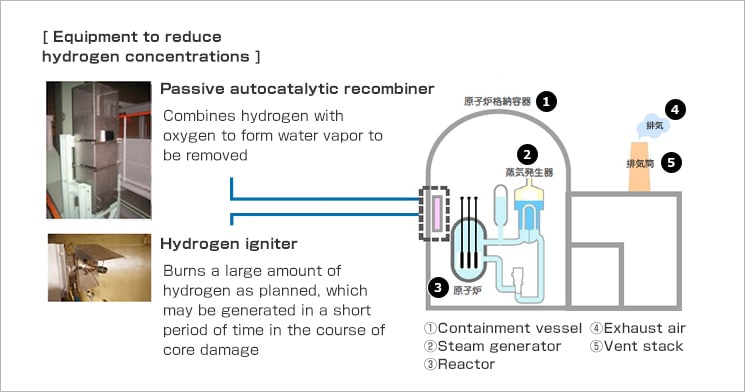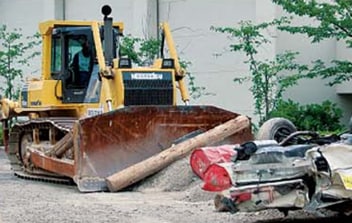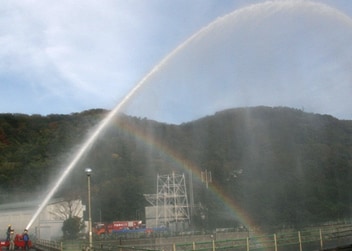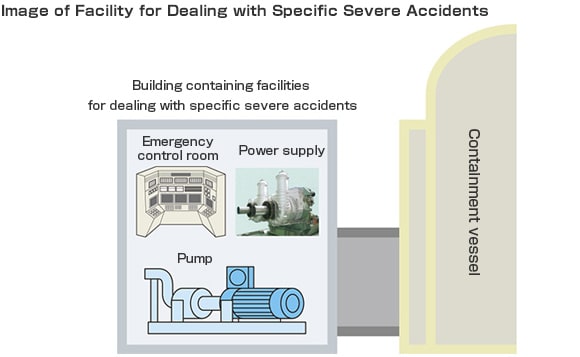Nuclear Power
Information
Preparation for Potential Severe Accidents
 Countermeasures against Severe Accidents
Countermeasures against Severe Accidents
Our nuclear power stations are taking every possible measure to protect against severe accidents which could result in core damage.
Measures to Prevent Containment Vessel Failure and Hydrogen Explosion
We are installing filtered ventilation systems, which can remove large
amounts of radioactive materials through two types of filters before releasing it to the
environment, in order to reduce the pressure in the containment vessel in the event of an
abnormal increase in the pressure.
Beside the filtered ventilation systems, we have installed passive autocatalytic
recombiners, which combine hydrogen with oxygen to form water vapor to be removed, and
hydrogen igniters, which are able to burn in a planned manner a large amount of hydrogen,
which may be generated rapidly during core damage.

Deployment of Heavy Machinery for Removing Rubble
We have deployed heavy machinery to remove rubble that might be generated by a tsunami to assure access for personnel and vehicles.

Construction of Emergence Response Center
We have constructed an emergency response center that meets the new regulatory requirements. We are also building a seismically-isolated office building.
Measures to Prevent the Release of Radioactive Materials

Besides assuring the power supply and cooling functions in case of potential severe accidents, our nuclear power stations are also taking various measures in case of containment vessel failure
During the Fukushima Daiichi accident, hydrogen leaked inside the
reactor building after core damage, which resulted in a hydrogen explosion and the
release of radioactive materials to the environment.
In light of this experience, we have deployed a water cannon, which can discharge 20,000
L/minute at high pressure. This water cannon would directly discharge water over damaged
sections to mitigate radioactive release in case of a containment vessel failure.
We have also installed a "silt fence", which is a curtain hung under water, to mitigate the diffusion of contaminated water in case of a release of radioactive water into the ocean.
Countermeasures against Intentional Aircraft Crash
We plan to install a facility for dealing with specific severe accidents to protect against an intentional aircraft crash, which could cause damage to the core cooling facilities and significant damage to the core.





